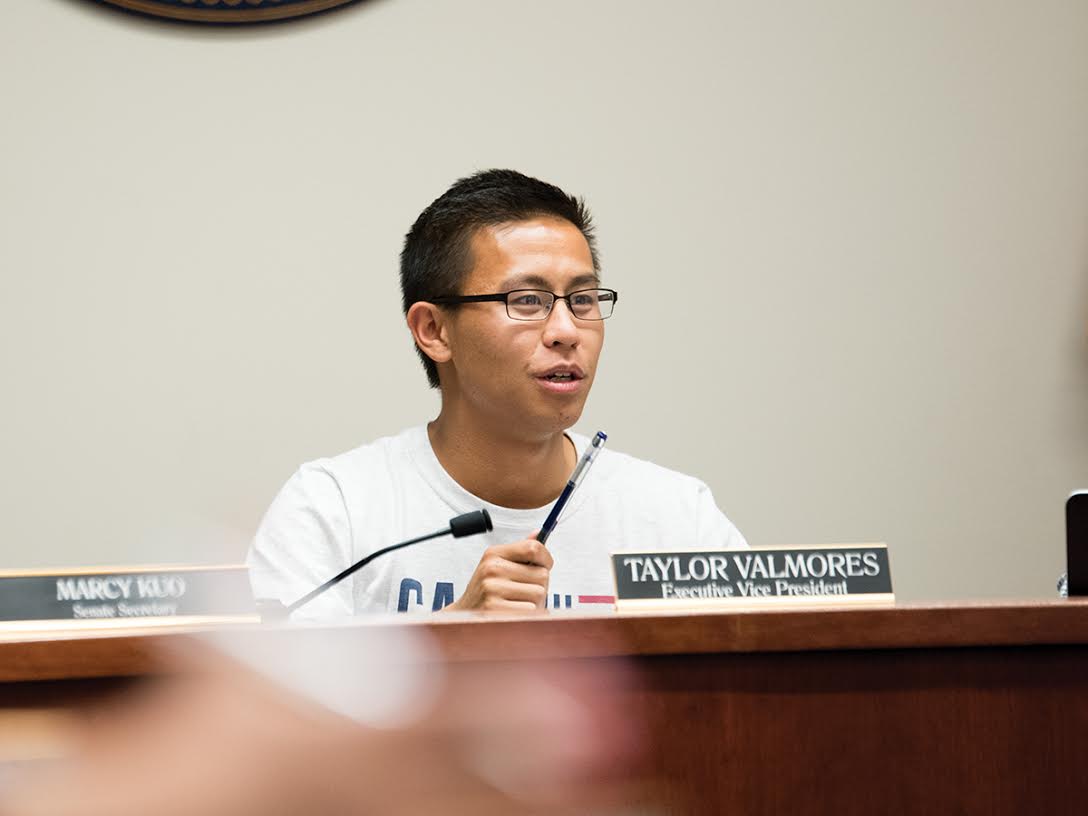 The ASUCR senate convened last Wednesday November 18, 2015, to discuss a variety of topics, among them the presentation of the Student Advocacy, Governance and Engagement (SAGE) opt-out fee.
The ASUCR senate convened last Wednesday November 18, 2015, to discuss a variety of topics, among them the presentation of the Student Advocacy, Governance and Engagement (SAGE) opt-out fee.
University of California Student Association (UCSA) president and fourth-year peace and conflict studies major at UC Berkeley, Kevin Sabo, and communications director, Anaïs LaVoie, flew in from Northern California to present on the SAGE opt-out fee which aims to reform the way that UCSA is currently funded.
Calculations to determine current UCSA funding by UC campuses takes the number of students on a campus and then multiplies that by at least $1.30. The resulting amount is decidedly paid out to UCSA, which is included in student government fees, in order for students who participate in UCSA to gain access to membership privileges such as meeting quarterly with UC president Janet Napolitano, receiving travel grants and conducting system-wide committee appointments. UCR students currently pay an estimated $1.50 quarterly to UCSA and are able to opt out of this fee when registering.
However, there is currently no way for students on other campuses to opt out of this mandatory fee. SAGE is proposing a voluntary opt-out fee of a tentative $4 to $6 per year while also allowing students to individually contribute, rather than through student government fees, to UCSA through a registration fee of $1.30 which would be standardized across the entire UC system. If the funding is reformed according to SAGE guidelines, the UCSA fee at UCR will be rolled back from the current $1.50 and the opt-out fee will be implemented.
Sabo spoke about his experience as a UC Berkeley student and how if he had wished to opt out of the UCSA fee he would have had to essentially withdrawal from the university. “Rather than force students to pay into an organization that they might not agree with and may not be able to hold directly accountable, we want to make sure that this fee is democratic and students can hold us accountable for the decisions we make,” asserted Sabo. “What this does is … it democratizes the fee and solves a few of the different problems.”
Sabo named UCSA fee disparities across the UC system such as UC Berkeley students paying $1.30 while UC Santa Barbara undergraduates pay $7, which then results in unequal representation as they both count as one vote at UCSA. This is among the many problems that could be corrected with SAGE.
The revenue generated from the reformation that SAGE may bring, before it is allocated to UCSA, “will go directly to financial aid for students under the UC’s return-to-aid policy, potentially generating nearly half a million dollars in aid,” according to the UCSA website. Bolstered capacity for legislative advocacy in Sacramento and DC and support for staff and improved technology, increasing the capacity of UCSA to serve students, are also considered as potential benefits from SAGE.
Currently the UCSA revenue is a little over $700,000 and is expected to reach roughly $900,000 to $1 million if the proposal is implemented. SAGE will be presented at the UC regents meeting in January of next year and details are still up for discussion and finalization. The earliest projected date for SAGE collection is fall of 2016.
Highlights:
-First-year political science major, Julia Schemmer, proposed a campaign to change campus culture and beautify the area colloquially named the “Rape Trail” which lies between Lothian and Pentland to “Legacy Path” where alumni can purchase bricks that will pave the path and build school pride.
-Vice Chancellor, Jim Sandoval, spoke to ASUCR in regards to the protest that occurred that Wednesday in solidarity with protests going on at University of Missouri, saying, “UC Riverside, specifically Chancellor Wilcox and myself, are fully committed to taking action on the demands that students began to articulate. (I understand) that we’re in the beginning stages of a dialogue.” Sandoval emphasized his commitment to creating a black student task force that would meet on a weekly basis to discuss and advise on issues pertaining to the black student community.
-Uma Ramasubramanian, senior physical planner, and Barbara Lloyd, Interim Director of Capital Programs, discussed the feedback they got from physical master plan workshops and the ideas that came from it. Watkins Hall and Spieth were marked to be razed and new buildings are to be built there instead. An on-campus bus terminal that runs up the stairs from University Ave. and parallel to Lot 19 was also floated as a strong possibility.








